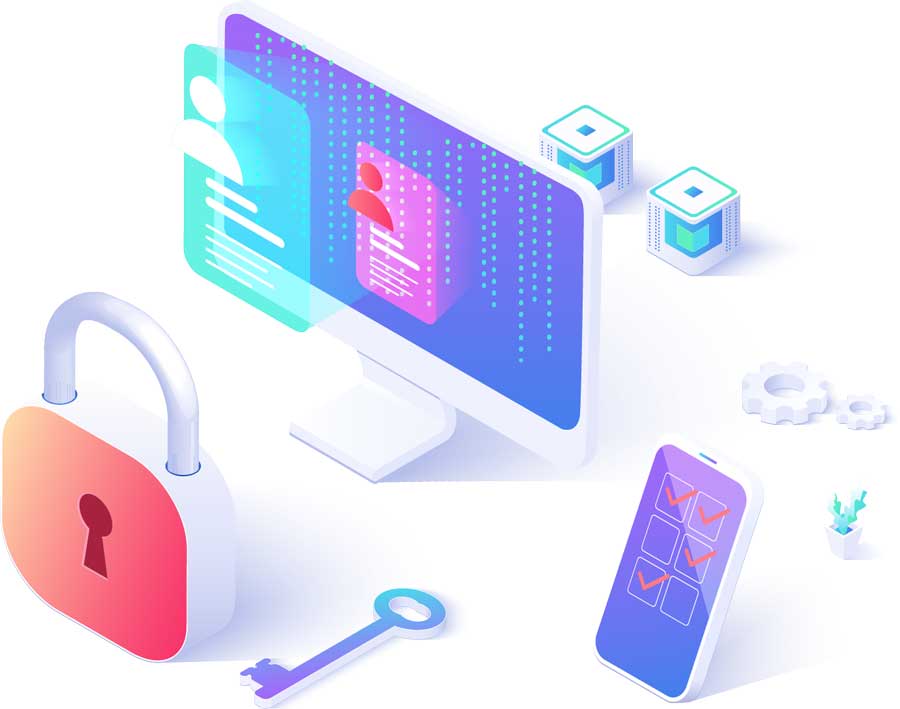In today’s rapidly evolving digital landscape, businesses must adapt to remain competitive and relevant. Digital transformation is no longer a luxury but a necessity for survival and growth. This comprehensive guide will walk you through the essential steps and strategies businesses can use to successfully transition to a digital model.
Understanding Digital Transformation
Digital transformation involves integrating digital technologies into all areas of a business, fundamentally changing how it operates and delivers value to customers. It encompasses a broad range of activities, including digitizing processes, adopting new technologies, and fostering a digital culture.
The Importance of Going Digital
Going digital offers numerous benefits:
- Increased Efficiency: Automation and digital tools streamline operations, reduce manual work, and improve productivity.
- Enhanced Customer Experience: Digital technologies enable personalized, seamless, and consistent interactions across various channels.
- Data-Driven Decision Making: Access to real-time data and analytics allows businesses to make informed decisions and respond quickly to market changes.
- Competitive Advantage: Digital transformation helps businesses stay ahead of competitors by leveraging innovative technologies and business models.
- Business Resilience: Digital solutions provide flexibility and scalability, allowing businesses to adapt to disruptions and changing market conditions.
Steps to Digital Transformation
- Assess Your Current State:
Before embarking on the digital transformation journey, it’s crucial to understand where your business currently stands. Conduct a thorough assessment of your existing processes, technologies, and capabilities.
Key Areas to Assess:
- Processes: Identify inefficiencies, bottlenecks, and areas where digital tools can add value.
- Technologies: Evaluate the current technology stack and identify gaps or outdated systems.
- Capabilities: Assess the skills and competencies of your workforce in terms of digital literacy and readiness for change.
- Define Clear Objectives:
Setting clear and achievable goals is essential for a successful digital transformation. Your objectives should align with your overall business strategy and address specific pain points or opportunities.
Common Objectives:
- Improving customer experience
- Increasing operational efficiency
- Enhancing data-driven decision making
- Expanding market reach through digital channels
- Reducing costs through automation
- Develop a Digital Strategy:
A well-defined digital strategy outlines the roadmap for achieving your transformation goals. It should include a detailed plan of action, timelines, and resource allocation.
Components of a Digital Strategy:
- Vision and Goals: Define the long-term vision and specific objectives for digital transformation.
- Technology Roadmap: Identify the technologies and tools required to achieve your goals. Prioritize solutions that offer scalability and integration capabilities.
- Implementation Plan: Outline the steps, timelines, and milestones for implementing digital initiatives.
- Change Management: Develop a plan to manage the cultural and organizational changes required for digital transformation.
- Invest in the Right Technologies:
Choosing the right technologies is crucial for the success of your digital transformation. Focus on solutions that align with your business objectives and provide a strong return on investment.
Key Technologies for Digital Transformation:
- Cloud Computing: Provides flexibility, scalability, and cost savings by eliminating the need for extensive on-premises infrastructure.
- Customer Relationship Management (CRM) Systems: Streamline sales, marketing, and customer service processes while providing valuable customer insights.
- Enterprise Resource Planning (ERP) Systems: Integrate various business processes, offering a unified view of operations and improving efficiency.
- Data Analytics and Business Intelligence (BI) Tools: Enable data-driven decision making by providing real-time insights into business performance.
- Automation and Artificial Intelligence (AI): Automate routine tasks, enhance productivity, and deliver personalized customer experiences.
- Cybersecurity Solutions: Protect digital assets and ensure compliance with data protection regulations.
- Foster a Digital Culture:
Successful digital transformation requires a cultural shift that embraces innovation, agility, and continuous improvement. Employees should be encouraged to adopt digital tools and practices.
Strategies to Foster a Digital Culture:
- Leadership Buy-In: Leaders should champion digital transformation and set an example for the rest of the organization.
- Training and Development: Provide training programs to enhance digital literacy and skills among employees.
- Encourage Innovation: Create an environment where employees feel comfortable experimenting with new ideas and technologies.
- Recognize and Reward: Recognize and reward employees who contribute to digital initiatives and embrace the digital culture.
- Enhance Customer Experience:
A customer-centric approach is vital for digital transformation. Leverage digital tools to enhance customer interactions and provide personalized experiences.
Ways to Enhance Customer Experience:
- Omnichannel Presence: Ensure a seamless experience across various channels, including online, mobile, and in-store.
- Personalization: Use data analytics to understand customer preferences and deliver personalized offers and recommendations.
- Customer Feedback: Implement tools to gather and analyze customer feedback, allowing for continuous improvement in products and services.
- Leverage Data and Analytics:
Data is a valuable asset in the digital age. Collect, analyze, and leverage data to make informed decisions and drive business growth.
Data-Driven Strategies:
- Business Intelligence Tools: Implement tools that provide insights into business performance, customer behavior, and market trends.
- Predictive Analytics: Use predictive analytics to forecast trends, customer needs, and potential risks.
- Real-Time Data: Leverage real-time data to make agile decisions and respond quickly to market changes.
- Streamline Operations Through Automation:
Automation can significantly improve operational efficiency by reducing manual tasks and errors.
Areas to Implement Automation:
- Marketing Automation: Use tools to automate marketing campaigns, email marketing, and social media management.
- Sales Automation: Implement systems to automate sales processes, from lead generation to closing deals.
- Supply Chain Management: Automate inventory management, order processing, and logistics to enhance efficiency and reduce costs.
- Human Resources: Use HR management systems to automate payroll, recruitment, and employee onboarding processes.
- Ensure Cybersecurity and Compliance:
With the increasing reliance on digital technologies, cybersecurity becomes paramount. Protect your digital assets and ensure compliance with relevant regulations.
Cybersecurity Measures:
- Data Encryption: Encrypt sensitive data to protect it from unauthorized access.
- Regular Updates and Patches: Ensure that all software and systems are regularly updated to protect against vulnerabilities.
- Employee Training: Educate employees about cybersecurity best practices and the importance of data protection.
- Access Controls: Implement strict access controls to ensure that only authorized personnel can access sensitive information.
- Compliance: Stay updated with relevant regulations and ensure compliance to avoid legal issues and penalties.
- Monitor and Optimize:
Digital transformation is an ongoing process. Continuously monitor the performance of your digital initiatives and optimize them based on feedback and data.
Strategies for Monitoring and Optimization:
- Key Performance Indicators (KPIs): Define and track KPIs to measure the success of your digital transformation efforts.
- Regular Audits: Conduct regular audits to identify areas for improvement and ensure that digital initiatives are aligned with business goals.
- Customer Feedback: Continuously gather and analyze customer feedback to identify pain points and opportunities for enhancement.
- Stay Updated: Keep abreast of emerging technologies and industry trends to ensure that your digital strategy remains relevant and competitive.



